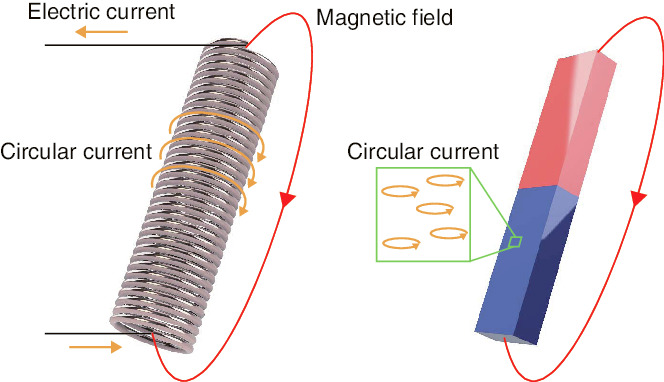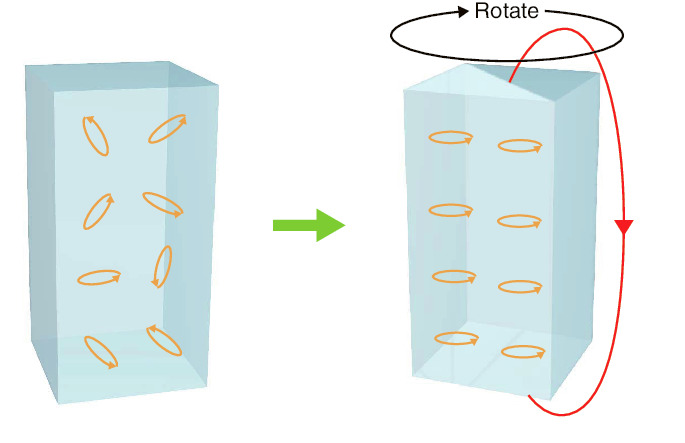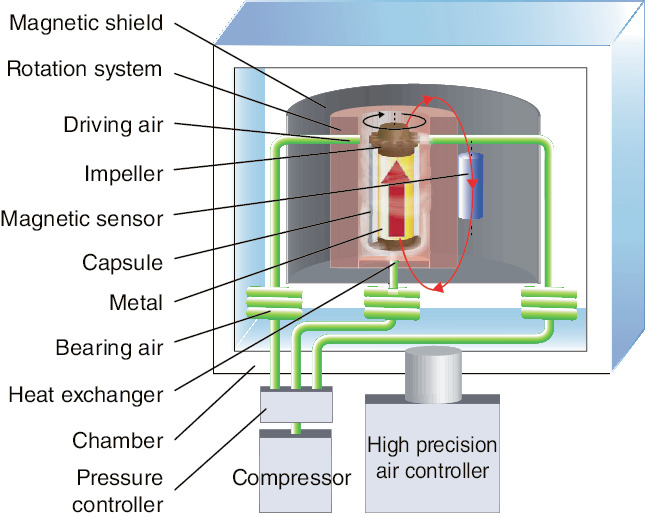
Fig.3-8 Electromagnet (left) and permanent magnet (right)

Fig.3-9 Barnett effect

Fig.3-10 Experimental apparatus for observation of the Barnett effect
Magnets are roughly divided into electromagnets, which become magnets when a current flows through coils wrapped around a metal core, and permanent magnets such as iron, which show magnetic properties without a current (Fig.3-8). Einstein thought that small circular currents in metal cause the properties of a permanent magnet and therefore believed that the direction of these circular currents could be controlled by rotation of the body. Einstein proved experimentally that changing the strength of the electromagnetic field surrounding an iron specimen could cause the specimen to rotate, which is known as the Einstein-de-Haas effect. In the same year, Barnett discovered the eponymous Barnett effect, whereby the intensity of a permanent magnet changes when its body is rotated (Fig.3-9). These experiments were performed using permanent magnets such as iron, but most metal does not show permanent magnetic properties at room temperature.
What happens when rotating an ordinary metal that is not a permanent magnet? By utilizing technologies developed over the past 100 years, we devised an in-situ magnetization-measurement apparatus to observe the strength of magnetization in metal rotating at several thousands of cycles per second, as shown in Fig.3-10. Using this apparatus, we performed experiments on gadolinium, terbium, and dysprosium, which are ordinary metals.
As a result of the experiment, we confirmed that ordinary metals turn into magnets during rotation, and that the strength of these magnets is proportional to the rotational frequency. This result indicates that circular currents can exist in any metal. Such currents can be divided into two types: orbital motion corresponding to the Earth turning around the sun, and the spin arising from the rotation of the Earth itself. We succeeded in determining the contributions of orbital motion and spin to the magnetism in each of gadolinium, terbium and dysprosium by precisely measuring the magnetic strength during rotation. We determined the strength of each circular motion in ordinary metal using mechanical rotation for the first time in the world.
This result, which provides a new way to control the magnetic properties of ordinary metal using mechanical rotation, is expected to allow nanoscale acceleration and magnetic sensors.